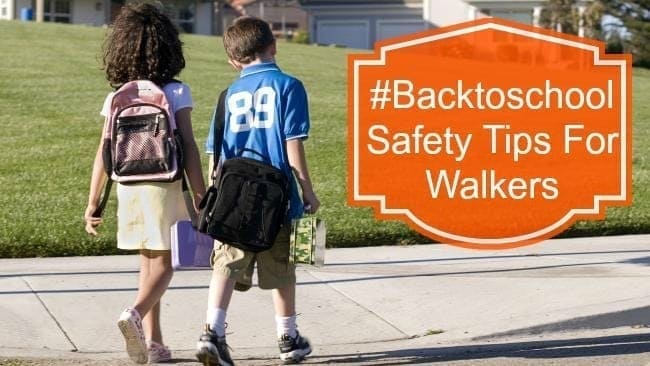
Did you know that in 2010, 19 percent of the children killed in a traffic accident were pedestrians? In 2016, that number rose to 23 percent.
When the school year starts, and they must walk to and from school what can you teach your children to help keep them safe on foot? These tips will help your little ones stay safe this school year.
Pay Attention To What’s Going On Around You
Many experts believe the rise in child pedestrian injuries is due to more and more kids using hand held devices, like cell phones, when they are walking. Teach your children that texting while walking is dangerous, and so is walking and playing games on a handheld device. For many pedestrians, it is second nature to listen to music while they are walking. Many accidents occur because earbuds/headphones have prevented the user from hearing an approaching danger. No matter what the device, it should be put away so they can pay attention to their surroundings.
Obey The Law
The next biggest factor in pedestrian accidents is children not following traffic laws. Do your kids know how to use crosswalks and signals? Do they understand what Jay-walking is and why they should not do it? Have you clearly explained the “Stop, Look, Listen” approach to road crossing?Do they know how to listen to crossing guards? Discuss the laws and why they exist with your kids, and even demonstrate them if you must.
Plan Your Route
Walk the route your child will take with them before school begins. During the walk, look for potential hazards (like Unchained dogs or potholes) and talk to your child about them. Also, show your child what to do along the route to keep them the safest. Practice crossing the road safely and choose the best spots at which to cross. Tell your child not to take another route unless approved by you first.
Pair Up
Have your kids get a walking buddy if you cannot walk with them. Ideally, children 10 and under will be with an adult (in some places it is illegal for them not to be), but if that isn’t possible, and older child or a group of kids could be a good substitute. If your neighbor’s children walk to school, send your kids with them. There is safety in numbers.
Stranger Danger
You can never discuss this too early or too often. Make sure your kids know all about strangers and how to handle a situation where a stranger may approach them. Explain what a stranger is and when it is OK to talk to a stranger – such as a police officer or firefighter.
When & How To Call For Help
Does your child know how to ask for help or who to call? Teach them what to do in case of an emergency. It is easy to assume that your child knows, but a situation of urgency can be frightening. Practice calling 911 (without dialing of course!) and explain that the dispatcher will ask them questions. Also, explain what does & does not count as an emergency.





